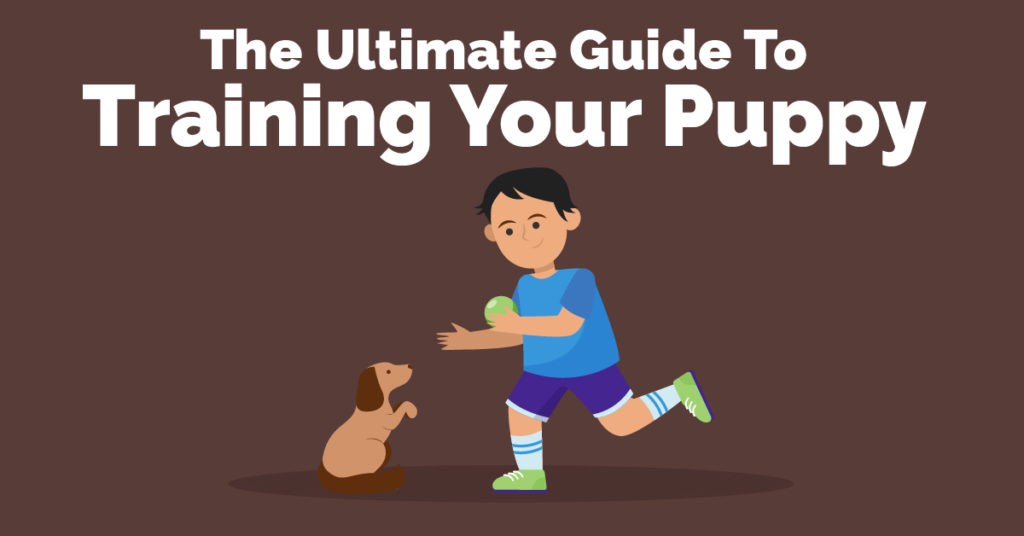
Getting a puppy is one of the most exciting and wholesome decisions that you can make. Dogs make wonderful companions and will be the most loving creatures you ever interact with. But, while you might want to spend all of your time playing with and marveling at how cute your new puppy is, you will eventually need to train them.
Training a puppy can be a smooth ride or a difficult task. This generally depends on the breed and temperament of the puppy. For first time dog owners, it is often surprising just how much of an individual personality your dog has.
Training a puppy can sometimes feel weird as it’s difficult to say no to those big puppy-dog eyes. You will want to let them get away with anything. But, training your puppy is just as important for them as it is for you. Being able to allow your dog off their leash and roam around without worrying about them running off, stopping them from running into a road, and stopping them from jumping up at people are all essential. So training your puppy is an absolute must.
When You Should Start Training Your Puppy
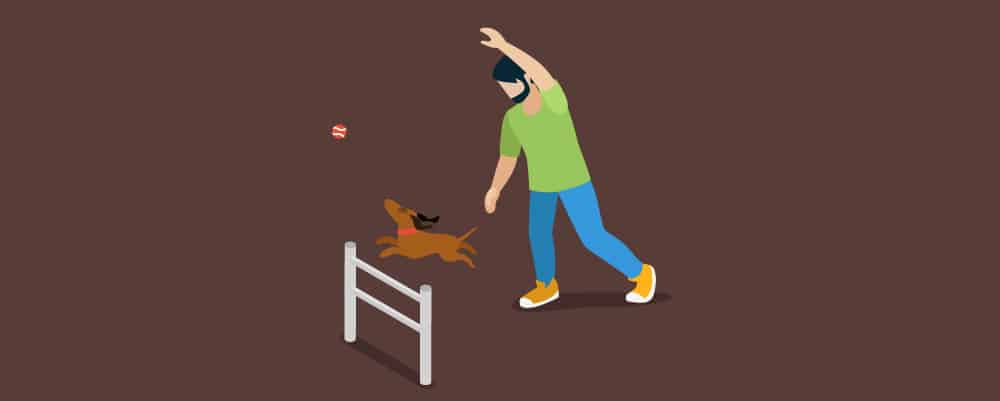
You can start training your puppy at a surprisingly young age. You might think that they need to wait until they are several months old until they can start being trained, but puppies can actually begin to learn simple commands from around seven to eight weeks old.
Training at this age should not last longer than five or ten minutes. The puppy can begin to understand commands but formal training will be too much for them. At this age, your puppy is likely to become bored or frustrated with the training, and trying to teach more after this will be fruitless. Training can be difficult and frustrating but always remember that your puppy is still very young and only wants to please you.
With all that said, you should still not begin formally training your puppy until they are around six months old. It’s important to begin some training before your puppy is six months old as they will learn behaviors from a very young age and so any bad habits they have before six months will need to be unlearned and retrained which will take more time and effort.
Why Is it Important To Train Your Puppy?
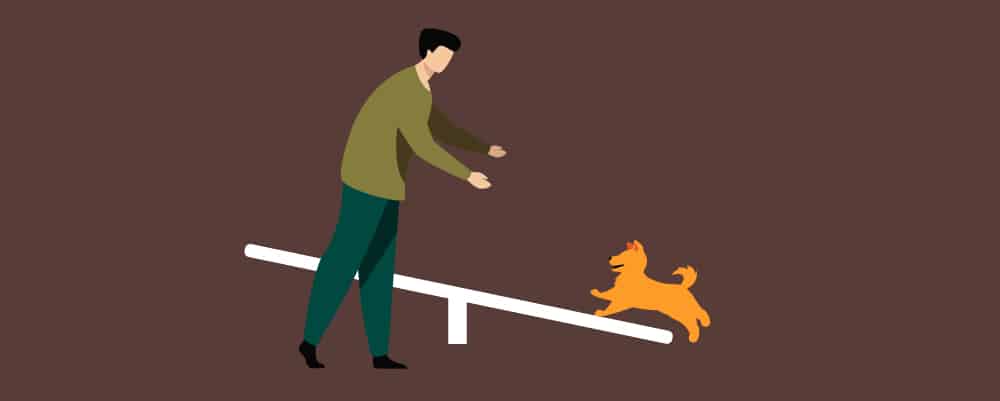
As mentioned above, training your puppy can seem strange but it is essential. It is essential from both a practical and a safety perspective. If your dog cannot follow commands then they can get into trouble or danger. Think of training a puppy as similar to teaching a child how to cross the road or not to run with scissors. When you get a puppy, you are responsible for raising them and training them to look after themselves and keep themselves safe.
Training your puppy does not mean teaching them how to do tricks or perform. Instead, training your puppy involves teaching them not to jump up, not to bite, and not to go to the bathroom indoors. Being able to teach your puppy to heel, sit, and lie down are also important for safety and their own sake. It will teach them to know that they can rely on you and seeing you as an authority figure will help them.
Remember that for most of their life, especially if you only have one dog, your puppy will only be around human beings. So they don’t have any other dogs to mimic or a parent to teach them. If a puppy isn’t taken away from their mother, they will usually be taught how to behave by them. Of course, a mother dog will not teach them how to do many of the things human beings teach dogs to do. But as the owner you are now essentially replacing the mother of your puppy.
Basics To Training Your Puppy
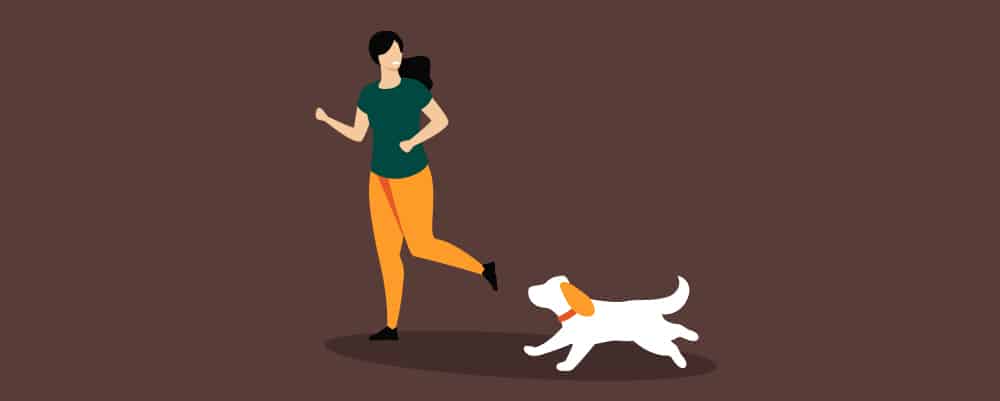
You might be tempted to pay someone to train your dog and sending them to training sessions is important for socializing and allowing them to interact with other dogs, but you should still do some training yourself. It’s important that your dog knows to listen to you and that you are an authority figure that they can be safe with and who knows what’s going on.
Training your puppy can become frustrating at times so there is nothing wrong with reaching out for help. In fact, if you are struggling with training your puppy then paying a professional might be the better option. If your puppy isn’t trained or is trained poorly, then this can be a problem with regard to safety. To get you started, here are the basics for training your puppy.
Training Should Begin In A Quiet Environment With Few Distractions
Puppies are known for being big balls of energy but training needs to be in a calm environment. This is similar to a student at school; they can only learn when they are focused and in a good learning environment.
This doesn’t mean that you have to be awkward and formal with your puppy. You can still be playful and use the go-to voice everyone has for animals. It just means that you need to dedicate time and space specifically for training.
Commit To Spending At Least 15 Minutes Of Training Per Day
Once your puppy is over six months old, it’s important to be training them for around fifteen minutes per day. This isn’t a huge amount of time and you will be grateful once you have done it. Before they are six months, try not to exceed more than five or ten minutes.
Fifteen minutes will be enough time to go over the training several times and get your dog used to it. But it won’t be too long or bore them. You don’t need to spend hours formally teaching your dog how to sit. They will get the hang of things pretty quickly and won’t be interested in being trained for too long. You don’t want all of your interactions with your puppy to be around training.
If you find your dog has a short attention span and isn’t engaging for a full fifteen minutes, then you can spread the training out over the whole day. This can even be better for some dogs as it will become a more standard part of their everyday lives and it will be more natural for them to absorb the training. If you live with other people, it’s also a good idea to get them involved and have them do a few minutes of the same training throughout the day.
Be Patient And Consistent
Once your puppy has been trained, then there won’t be much more that you need to do. But in the beginning, it’s going to take a lot of work. Having a dog is a lot of responsibility throughout their lives, but especially when they need to be trained.
Patience is essential when training your puppy. Remember they are only young and probably think that you’re just trying to play with them. So don’t get annoyed or frustrated if they just try to play. This is part of the training process; teaching them when it’s appropriate to play and when you’re being serious. Dogs can pick up on your tone of voice as well as the specific command words, so they will understand you eventually.
Consistency is also very important. You need to train your puppy daily and not give up. If you give up because it’s difficult, then the behaviors can become unlearned and your puppy will not benefit from it. They can also get into difficult situations if, for example, they do not know to come when called, to stop at a busy road, or to not eat something that they cannot eat.
Get Your Puppy Into A Routine
In amongst all the excitement of having your new puppy, it’s easy to forget that they have suddenly gone from one strange environment to another. The puppy will have spent weeks in one place, likely the only place they have known, and have been taken away from their mother and their home.
This isn’t quite as dramatic as it sounds, but it does mean that establishing a routine is important for your puppy. A routine will also help with training as they will become accustomed to consistency and predictability. It will also help them to understand that you are in charge, need to be listened to, and know best.
A routine will also be beneficial for you. Having dedicated times for feeding, walking, and bedtime will help you and your puppy fit into your lives better. You might be able to fit your puppy’s routine around your own, but there’s a chance that you will need to find a new routine to incorporate a puppy into your life.
Use Food & Toys To Get Your Puppy To Follow Your Commands
The best way to train your puppy is through a reward system. It will help you to communicate to your puppy that they have done something right and are being rewarded. Reward systems will get your puppy to follow commands in order to receive a treat. Eventually, they will follow the command automatically as they know it is the right thing to do, rather than in the hopes they will get a treat.
Using treats and toys also makes the training fun for your puppy. It will feel more like a game which will be a much nicer experience for them. Learning through play is a great way to make your puppy actually enjoy training, rather than making it a chore. You don’t want your puppy to have a negative association with training, otherwise they won’t want to do it and will potentially cause them to not follow commands.
Eventually, the goal is for your puppy to follow commands without the expectation to receive a treat. This might seem strange but it does work.
Start Socializing Your Puppy Early
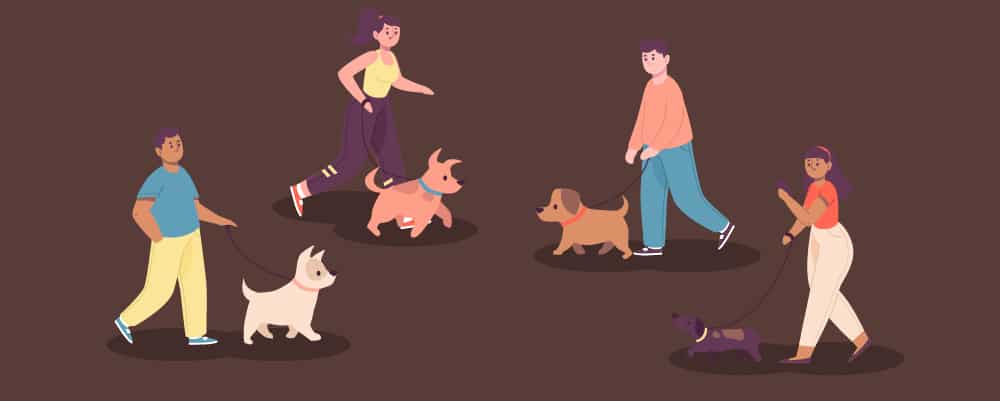
Your puppy will love spending time with you but they need to be socialized with other people and other dogs. During the Covid-19 lockdown, a lot of people bought dogs but due to lockdowns they were not able to socialize and this became a problem. Dogs were not used to being around people and other dogs so didn’t know how to appropriately interact with them.
Socializing your puppy will make them more comfortable around other dogs and people. They will be less likely to act aggressively toward others and also to not be fearful. As mentioned above, dogs all have different personalities, so some will be bold and confident whereas others will be shy and timid. This means that they need to be comfortable around other dogs and humans.
Socializing is also as good for your puppy as it is for people. Allowing your puppy to play with other dogs will allow them to have fun and is also great exercise. This will take some of the pressure off you as you won’t have to be wholly responsible for exercising your puppy and playing with another puppy is a much more fun way of exercising than a walk around the block.
It’s best to start socializing your puppy when they are around twelve to fourteen weeks old. This is an important socialization period that has begun with the breeder or at the shelter and is now further developing with you at home.
Socializing is important for your puppy to become used to other dogs and people, but also other feelings and experiences. This can include feelings underfoot such as sidewalks and grass, as well as the noise of cars or animals other than dogs if you live in a rural area. Remember that while your local area seems very normal to you, your puppy is experiencing it all for the first time. So don’t be surprised, or concerned, if your puppy becomes spooked when they meet a cat.
Avoid Overwhelming Your Puppy If It’s Experiencing Fear
This is another super important part of puppy training. Remember that your puppy will still want to play with you and can become nervous or confused when you begin training them formally. You really don’t want to overwhelm your puppy or make them nervous while training them. This can make them averse to following commands and negatively impact any progress you might have made. Just as with human children, you don’t want to push them beyond their limits.
This is one of the reasons why some training is advisable before your puppy turns six months old. Before they are three months old, your puppy will be more excitable and want to play and learn. They will also be more eager to socialize and less likely to be afraid. This makes it a great time to socialize your puppy and get them used to different areas and learning new commands.
Puppies go through periods of time known as “fear periods”. During this time, your puppy will be more fearful, more sensitive toward the world around them, and feel nervous about new experiences. This can make training difficult as they can become distrustful of the commands and things you are teaching them, as well as nervous around other dogs and things in the outside world.
There are usually two fear periods; one at around eight to eleven weeks and another at around six to fourteen months. The first fear period is very understandable as your puppy is experiencing everything for the first time and also being taken from the only environment they have ever known in order to move in with you.
It’s important to make sure that your puppy is comfortable and in a routine when they first get home with you as it will make them feel safer and less fearful.
The second fear period happens when your puppy is between six months and two years old. This can be a shock as it’s easy to forget that a dog of this age is still a puppy. At this stage, it can sometimes feel as though your puppy has forgotten everything that you have trained them to do and is regressing. But this isn’t the case.
A second fear period is normal and nothing to be concerned about. It is also a temporary blip that will go away eventually. It’s important to not get annoyed with your puppy or give up on them when they go through this second fear period. Make sure to reassure them and continue with their usual routine. Things will go back to normal relatively quickly.
Train Your Puppy To Use A Crate
Using a puppy crate can sometimes feel strange and wrong, but they will help to keep your puppy safe when you’re not around. Your puppy shouldn’t be kept in a crate for long periods of time. They should really only go in there when you’re sleeping. At other times, try to keep your puppy in one room and add some baby gates around the house, especially near any stairs or steps.
Just like human toddlers, a puppy will be curious and want to explore. As mentioned above, puppies can be relatively fearless when they are only a few months old, so they won’t have the same sense of danger as when they are older. This means that you need to keep them safe and stop them from roaming around.
It’s important to make sure that your puppy feels safe in their crate and has positive associations with it. Put your puppy’s bed in the crate and place some treats in there to start off with. During the day, spend time with your puppy near the crate and keep the door open. This will make them more comfortable with being inside the crate.
Eventually, you will need to shut and lock the crate which can potentially be distressing for your puppy. Practice doing this with your puppy during the day so they become used to it and place them in the crate to sleep when they first come home with you.
This is a much better option than allowing them out all day and then placing them in the crate, turning the lights off, and leaving them alone. This can be much more distressing. Your puppy will one day grow out of needing their crate, but in the beginning it can keep them safe and make them feel secure. Dogs are den animals and will feel comfortable in small confined spaces, such as in a crate.
Potty Train Your Puppy
This is a big part of puppy training. Unfortunately, you can’t get your puppy to wear a diaper as you would with a baby, so potty training is an essential part of raising a dog. When they are small, you can use puppy pads. These are square pads made from similar materials to diapers. They can be placed around the room your puppy is being kept in so that they will use them when they need the toilet.
When your puppy is small, they will go to the toilet wherever and whenever they need to. Remember that a puppy cannot hold their bladder until they are around sixteen weeks old. So do not get angry or annoyed if they go on the floor. There are some old ideas that rubbing a puppy’s nose in their own mess will stop them from doing it again. But this isn’t true and it is also cruel and completely unacceptable.
One way to get your puppy to use the puppy pad is to simply carry them over to it or maneuver it beneath them as they peeing or pooping. Your puppy is smarter than you think and they will understand. Eventually, your puppy will know to go to the toilet on the puppy pad. After a while, you can start moving the puppy pad outside. This will show your puppy that they need to be outside in order to go to the toilet.
Try to do this gradually by moving the pad a little further each day. Start using phrases when they are going to the toilet such as “go potty” or whichever phrase you prefer. Eventually, your puppy will try to go outside when they need to go to the bathroom. When you are out, they will also understand the command and try to go potty when you use your chosen phrase. It’s a good idea to get into a routine with your puppy so that they are not forcing themselves to go when they don’t need to.
Leash Train Your Puppy
Leash training your puppy can often be frustrating. When you first take your puppy for a walk, they will be nervous and unsure of the outside world. They will also be confused about the leash, likely trying to bite it and get away from it. They will want to run around freely or run straight back home.
It’s a good idea to get your puppy used to their collar, harness, and leash before going for a walk. Try to have them around your puppy in your home so that they are comfortable with them. There’s a good chance that they will become confused and try to take off a collar or a harness, so try having them wear it for short periods of time, gradually increasing the time periods until they are used to them.
It’s also a good idea to clip the leash to a harness rather than a collar. This is more comfortable for your dog as you won’t be pulling at their throat. It will also allow your dog more freedom and can be useful if they try to pull. When you’re out with your puppy, they will be excited by all the new sights and smells and try to run on ahead. It’s important to be able to gently pull your puppy back to your side and keep them walking quietly and nicely next to you. This is another opportunity to use treats whenever they fall back into walking nicely and when they stop or sit when you tell them to.
Introduce Obedience Commands
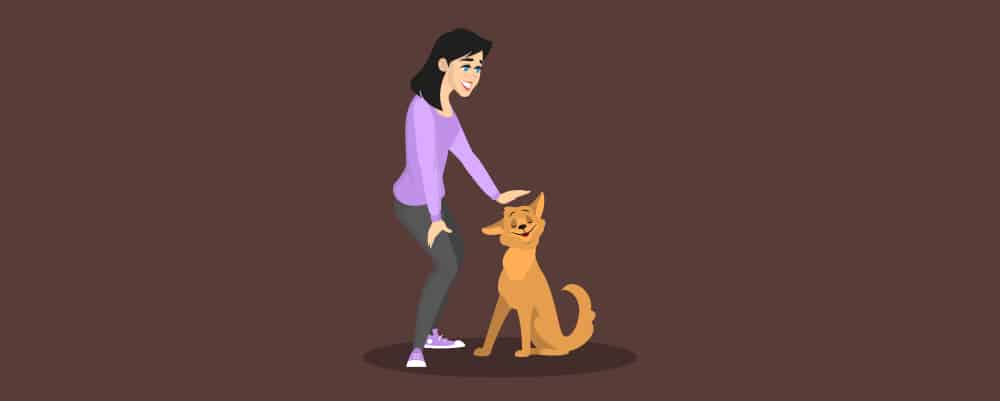
Teaching your puppy to understand your language can seem strange at first but they are a lot more intelligent than they seem. Start really small and simply when your puppy is young. For example, when teaching them to come when called, sit near them and say their name and/or “come” and then give them a treat. They don’t need to actually move but this will give them a positive association with the word.
When you’re teaching them to sit, say the word “sit” as you gently push their hindquarters until they are sitting down. Then give them a treat whenever they sit. Your puppy will eventually begin to follow your commands and when they do you should give them a treat. Eventually, they will follow your commands without the expectation of a treat and they will understand what is expected of them.
Train Your Puppy Not To Bite
Puppies will often bite you and other dogs when they are playing. They are not trying to hurt you but are instead play fighting. But this doesn’t mean that they should continue doing it. When your puppy is around other dogs, they might become frightened if your dog tries to play fight and bite them.
Of course, there are dogs that will bite maliciously, but this is often because of how they are trained or other factors outside of their control. There are some breeds that people associate with aggression but they are only this way because of how they have been bred. These dogs might have a slight tendency toward aggression due to having been bred that way, but they can be easily trained to be docile and not to bite.
As well as play biting, your puppy will likely try chewing up a lot of household items, including clothes and furniture. This is one of the reasons why your dog needs toys. You can’t stop them from having the instinct to chew and bite but you can redirect it.
Teach Your Puppy On How To Be Home Alone
Leaving your puppy alone can be sad and painful. You obviously cannot explain to your dog that you will be coming back soon so they can seem confused and distressed. If you live with others, then it’s a good idea for one or more of you to stay at home while the other goes out. This will give your puppy an understanding that people will come and go from the home but will always come back.
At some point, you are going to need to leave your puppy alone so they need to become used to this. Try to get them used to being by themselves while you’re still in the house. This will get them used to their own company and feel less anxious when you’re gone. You can reassure them with your voice from a distance which will make them feel safer. Eventually, they will become used to their own company and understand that you will always come back.
Summary

Training your puppy can be difficult and it can feel strange, especially when all you want to do is play with them and telling them what to do can sometimes feel wrong. But training your puppy will make life easier and safer for both of you and it is essential.
The tips above should give you a good starting point but don’t worry if you aren’t doing everything perfectly. Remember that you are teaching an animal how to respond to your words and gestures, which in itself is pretty incredible.
If you do ever find yourself struggling to train your puppy, then seeking professional help is definitely a good idea. Just remember that you need to learn the commands and how to interact with your puppy just as much as they need to be trained. It’s a learning experience for both of you.
